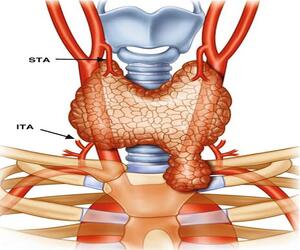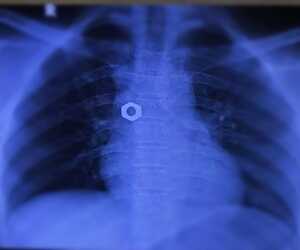- thoracichelp@gmail.com
- JPMC, Karachi
Disease Spectrum
-
ThoracicHelp > Disease Spectrum
Disease Spectrum
ESOPHAGUS

Esophageal Cancer
Yearly 4.2 per 100,000 people develop esophageal cancer resulting in dysphagia. Five year survival is 18% at later stages. Early assessment and surgical intervention improves the overall outcome

Motility Disorders
It is dysfunction of the esophagus that causes dysphagia, heartburn, and chest pain. Achalasia cardia is the most common type. Medical treatment allows temporary whereas myotomy along with fundoplication allows permanent resolution of symptoms

Strictures
Corrosive ingestion results in stricture formation causing complete luminal obstruction. Endoscopic dilatation, alone or with injections of corticosteroids and removable self-expanding intra-luminal stents and surgery are various treatment options

Esophageal Perforation
A surgical emergency having a mortality rate of 40 to 80 %. The golden period of surgical intervention is within 12 to 48 hours. Any intervention done beyond this time frame holds high morbidity and mortality
Disease Spectrum
LUNGS

Aspergilloma
Aspergilloma, also known as fungal ball, develops in pre-existing pulmonary cavities. It usually occurs in patients with underlying lung disease such as tuberculosis, cystic lung diseases. Symptoms may include chest pain, cough and hemoptysis

Hydatid Cyst
Hydatid disease is caused by a parasitic infection resulting in formation of cysts within the lung parenchyma. It can remain asymptomatic or can present with chest pain and discomfort due to increasing size. Surgical excision is the treatment of choice

Lung Cancer
Lung cancer is the leading cause of cancer-related mortality worldwide. The incidence increases with age. It is strongly associated with smoking, exposure to radiation therapy, radon gas and other carcinogens. Mostly patients present at an advanced stage

Tuberculosis
Tuberculosis is a disease caused by Mycobacterium tuberculosis and affects around 8.7 million people worldwide. It usually presents with pulmonary manifestations but can involve extra-pulmonary sites such as pleura, lymph nodes, cold abscess, bones, meninges, intestines,etc

Bullae
A bulla refers to an air-filled space within the lung parenchyma that is greater than 1-2cm in diameter. Common causes include tobacco smoking, alpha 1 anti-trypsin deficiency, inflammatory and cystic lung disease
Disease Spectrum
MEDIASTINUM

Thymus
Thymoma often result in signs and symptoms of myasthenia gravis which affects all skeletal muscles of the body causing fatigue, diplopia, dysphagia etc. Thymectomy allows complete remission in 55 percent and decrease in medication dosage in the rest

Teratoma
A type of germ cell tumor that may contain immature or fully formed tissue, including teeth, hair, bone and muscle. Surgical excision is the mainstay of treatment compared to other forms of germ cell tumors

Lymphoma
Tumors originating from cells of the lymphatic system. Their presentation varies on the histological subtype requiring tissue biopsy. Treatment options include chemotherapy, radiation therapy and monoclonal antibodies

Thyroid
Mediastinal ectopic thyroid gland is a rare entity and accounts for approximately 1% of all mediastinal tumours. Retrosternal goitre often require thoracic surgical intervention

Neurogenic Tumor
Neurogenic tumors originate from cells that make up the nervous system. They are the most common tumors of the mediastinum (the region between the lungs). Neurogenic tumors are commonly found in the posterior mediastinum, also known as paravertebral space, the back of the spine
Disease Spectrum
PLEURA

Effusion
Pleural effusion is the accumulation of fluid in between the parietal and visceral pleura, called the pleural cavity. It occurs as a result of surrounding parenchymal disease like infection, malignancy, or inflammatory conditions

Empyema
Empyema is pus in the thoracic cavity along with a thick fibrous peel completely entrapping the lung. Common causes are tuberculosis, parapneumonic effusion, poorly managed tube thoracostomy. Decortication via open thoracotomy or VATS is the preferred managed option

Tumor
Primary pleural malignancies are rare tumors of the thorax with solitary fibrous tumor as the most common subtype. Mesothelioma is a highly malignant form with poor outcome. Additionally, majority of pleural masses are secondary to metastasis

Pneumothorax/Hydrothorax
Air or fluid in the pleural space results in alteration of respiratory physiology.It can lead to hypoxemia eventually causing cardiopulmonary arrest. Tube thoracostomy is the initial treatment that allows further assessment for the need of any major surgical intervention
Disease Spectrum
TRACHEA

Tracheal Stenosis
Prolonged intubation , poor tracheostomy, trauma or infection result in the development of stenosis which causes upper airway obstruction and asphyxiation. Definitive treatment is resection and primary anastomosis

Foreign Body
Accidental ingestion of scarf pin, sewing needle or beetle nuts etc are frequently seen in younger age group. Extraction via bronchoscopy prevents complications such as pneumothorax, hemoptysis, fistula or bronchiectasis

Tracheal Tumors
Rare tumors with low survival rate if not managed aggressively. Squamous and adenoid cystic are common types mostly seen in adults. Surgery followed with chemotherapy provides a favorable outcome
Disease Spectrum
CHEST WALL

Tumor
They form 2 % of all tumors and 5 -10% of all thoracic tumors. Common presentation includes a lump or a painful nodule. Surgery with or without reconstruction provides better histopathological clearance

Abscess
Include sebaceous cyst, carbuncle, cold abscess. They develop following trauma, tuberculosis or in immunocompromised states. Management is directed towards drainage and antibiotic therapy

Flail Chest
Three or more rib fractures at two or more places results in paradoxical movement of chest. Subsequently, it results in poor mechanical ventilation causing respiratory compromise. Nerve blocks, invasive ventilation and rib fixation are the preferred treatments
Disease Spectrum
DIAPHRAGM

Eventration
Thinning of a portion or all of the diaphragm where muscle has been replaced by fibroelastic tissue resulting in recurrent infections and shortness of breath. Plication of diaphragm allows resolution of symptoms

Diaphragmatic Hernia
Hernia can be congenital or acquired following a penetrating or blunt chest injury. Presenting symptoms are dyspnea, orthopnea, bowel obstruction or distress. Reduction of abdominal content with repair of defect is the definitive treatment
